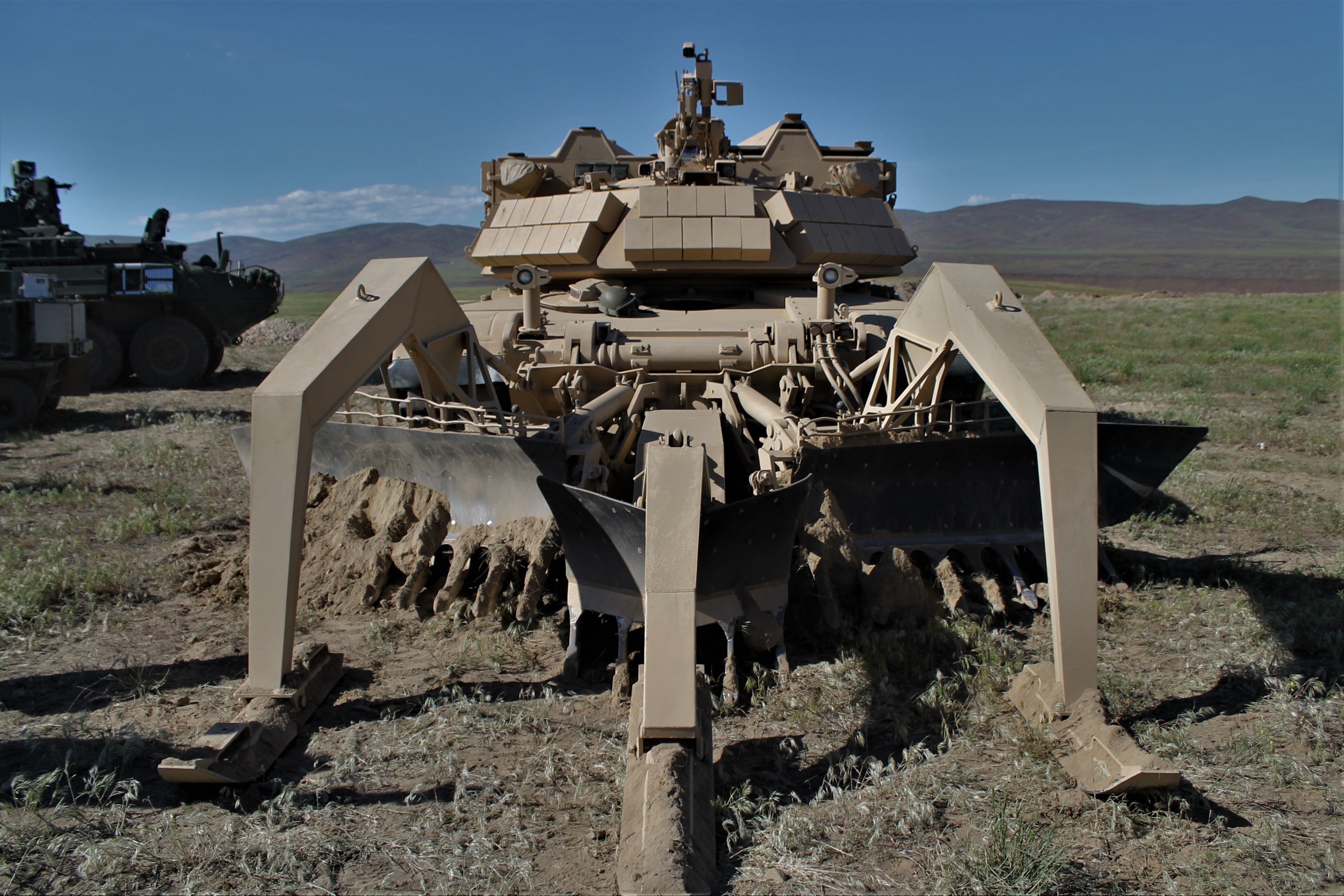UPDATE — This story was updated to include a statement from BAE Systems and to confirm Pratt & Miller’s participation in the RCV-M competition with QinetiQ North America.
WASHINGTON — Three teams have been picked to move on in the U.S. Army’s competition for medium-sized robotic combat vehicle prototypes, according to a Nov. 1 announcement on the National Advanced Mobility Consortium’s website.
General Dynamics Land Systems, QinetiQ North America and Textron have been invited to advance out of a pool of numerous submissions.
Two of these companies — QinetiQ and Textron — were also recently selected to move on in the competition to build a light version of robotic combat vehicles, or RCV.
The Army plans to procure light, medium and heavy RCVs as part of an effort to bring a next-generation combat vehicle capability to the force by 2028.
The light and medium competitions are managed by the NAMC. While the Army is the decision-maker, the consortium is tasked to execute the competitions.
Mirroring the RCV-L competition, the Army is expected to award up to two contracts toward the end of the second quarter of this fiscal year to deliver four non-development RCV-M surrogate vehicles for government evaluation, testing and manned-unmanned teaming experimentation over the course of a year.
NAMC executed a week-long RCV market research demonstration with the Army at Texas A&M’s RELLIS campus in May in order to better inform requirements. QinetiQ and Textron were both present, but neither brought medium variants of RCVs. In fact, no company participating in the demonstration brought medium-class candidates.
“That might shape the strategy moving forward,” because the timeline for such a platform is very short at the moment, Kevin Mills, the Army’s Combat Capabilities Development Center’s Ground Vehicle Systems Center (CCDC GVSC) associate director, told Defense News at the time of the demonstration.
The winning vendor would have 11 months after contract award to supply the Army with prototypes for safety testing, he said, “which doesn’t give a ton of time for our contractor, that doesn’t have a mature system already, to work out the kinks and build something.”
RELATED

At the Association of the U.S. Army’s annual conference last month, Textron and Howe & Howe unveiled their RCV Ripsaw M5, which is based on Howe & Howe’s long-time experience building unmanned ground vehicles, but adds technology like scalable armor and suspension and drive options to cope with the challenges expected in the future fight. FLIR Systems is also part of the team, contributing advanced sensors.
A variant of Ripsaw was also selected to continue on in the RCV-L competition.
A Qinetiq and Pratt & Miller team was also selected to submit a variant of the Expeditionary Modular Autonomous Vehicle (EMAV) tailored for the Army’s needs for the RCV-L effort. The offering combines Qinetiq’s modular open-architecture control systems with Pratt & Miller’s advanced mobility platform. Pratt & Miller is also a partner with QinetiQ for the RCV-M program.
GDLS submitted its GD-TL-1 as its RCV-M candidate and displayed a small model in a case at its booth at AUSA. The company is also offering a common platform that meets many of the Army’s RCV-L requirements, according to Don Kotchman, GDLS U.S. market vice president and general manager.
GDLS was not selected as a finalist in the RCV-L competition.
But, late last month, the Army chose GDLS’ Multi-Utility Tactical Transport, or MUTT, for its Squad Multipurpose Equipment Transport unmanned ground system program of record.
BAE Systems touted a realm-of-the-possible RCV-M concept at AUSA, and submitted an offering to the RCV-M competition.
“We are disappointed we were not selected for the U.S. Army’s RCV-M request for prototype proposal. We will continue to develop our advanced Robotic Technology Demonstrator to explore the full range of highly innovative robotic and autonomous capabilities to meet the Army and other customers’ emerging and future requirements,” the company said in a statement sent to Defense News on Nov. 1.
BAE ducked out of the Army’s Optionally Manned Fighting Vehicle competition earlier this year but cited its interests in competing in the RCV space.
The company told Defense News, which broke the news that BAE was dropping out of the OMFV competition, that it wanted to look deeper into the future at objective modernization capability 10 times more effective than what the service has now.
“We want to go after that objective 10X capability and we want to start focusing on that, and in our mind that is around autonomy and robotics,” Jim Miller, senior business development director for combat vehicles at BAE, said.
Jen Judson is an award-winning journalist covering land warfare for Defense News. She has also worked for Politico and Inside Defense. She holds a Master of Science degree in journalism from Boston University and a Bachelor of Arts degree from Kenyon College.








